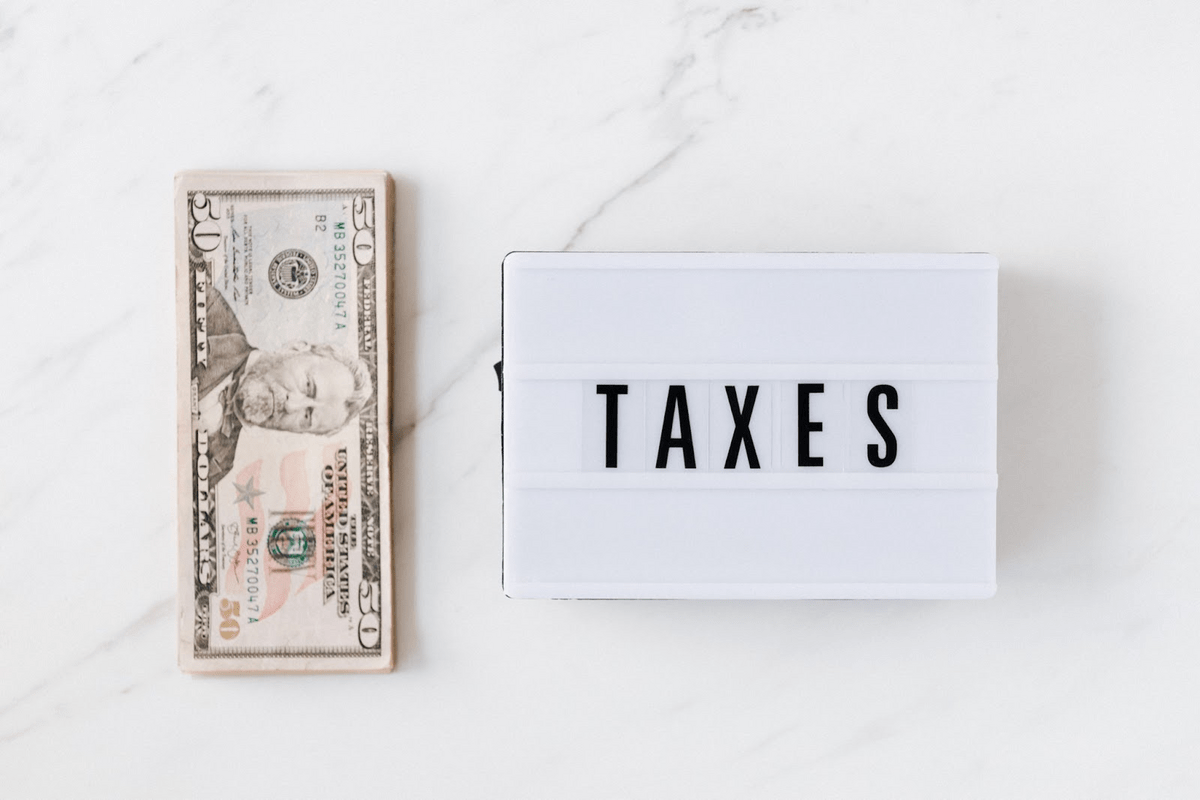New to investing? Still figuring out the lingo?
Here’s a financial glossary entry that can help you maximize returns on your investments: real rate of return.
What is real rate of return — and why does it matter? In this article, you’ll learn everything you need to know, including the real return formula, the meaning of nominal return vs. real return, and more. Keep reading to learn how to use the real rate of return to help make the most of your money now and in the future…
So many ways to invest…
There are plenty of ways to invest, and just as many investing platforms. Here are some of our favorites across a variety of different asset classes:
- For stocks, ETFs, REITs, and crypto: eToro*
- For real estate: Fundrise
- For online savings: CIT Bank
- For art: Masterworks
eToro is a multi-asset platform which offers both investing in stocks and cryptoassets, as well as trading CFDs.
Please note that CFDs are complex instruments and come with a high risk of losing money rapidly due to leverage. 61% of retail investor accounts lose money when trading CFDs with this provider. You should consider whether you understand how CFDs work, and whether you can afford to take the high risk of losing your money.
This communication is intended for information and educational purposes only and should not be considered investment advice or investment recommendation. Past performance is not an indication of future results.
Copy Trading does not amount to investment advice. The value of your investments may go up or down. Your capital is at risk.
Crypto investments are risky and may not suit retail investors; you could lose your entire investment. Understand the risks here https://etoro.tw/3PI44nZ
Don’t invest unless you’re prepared to lose all the money you invest. This is a high-risk investment and you should not expect to be protected if something goes wrong. Take 2 mins to learn more
eToro USA LLC does not offer CFDs and makes no representation and assumes no liability as to the accuracy or completeness of the content of this publication, which has been prepared by our partner utilizing publicly available non-entity specific information about eToro.
Note: We earn a commission for this endorsement of Fundrise.
What is Real Rate of Return?

The real rate of return definition is pretty simple: it refers to the return on a given investment after taking into account the rate of inflation.
While not included in the real rate of return formula, another factor to take into account are the taxes on your investment. Those will also impact the rate of return after you’ve adjusted for inflation.
As for related terms — what is the nominal rate of return on investment? The nominal rate of return is usually the rate advertised to you when you’re getting into a particular investment. However, this does not take into account either inflation or taxes and can be quite misleading so it’s important to be aware of the rates of nominal return vs. real return.
For example:
- If you make an investment with an advertised 10% annual return rate (the nominal return rate)…
- But inflation in your country is 6%…
- The real rate of return would be a mere 4%.
This is important to consider and not to be overlooked because inflation and taxes erode returns substantially.
All told, the real rate of return is a more accurate metric of your investment performance than the advertised (nominal) rate of return.
Real Rate of Return Formula

The formula to calculate real rate of return is as follows:
Real rate of return = (1 + Nominal Rate) / (1 + Inflation Rate) – 1
With this simple real return formula, you can get a better idea of your annual earnings from a particular investment.
But keep in mind — this does not take into account the tax rate you’ll also be paying on said investment.
To figure that out, use the formula below:
Tax Adjusted Nominal Rate = Nominal Rate x (1 – Tax Rate)
Using both of these formulas will help you gather accurate information about your investment and figure out the real rate of return for what you’re getting into.
Love calculations? You’ll love Empower‘s suite of FREE financial calculators.
While Empower is perhaps best known for its financial services and wealth management, it also offers a ton of FREE tools that can help you keep your portfolio on track, such as a Net Worth calculator, Budget Planner, and more.
Real Rate of Return vs. Nominal Rate of Return
Once you find out the nominal return vs real return, it can be disheartening to realize your investment may not have as much profit potential as you thought.
Even if a nominal rate sounds good, it’s still subject to inflation which can eat up the profits of investing based on the rate of inflation.
In short, the real rate of return will always be lower than the nominal rate of return simply because the nominal rate never took into consideration inflation and the taxes you’ll have to pay on your investment.
Figuring out the real rate of return can help you make more savvy investment decisions than relying solely on the nominal rate of return.
Difference Between a Real and Nominal Interest Rate
To make it abundantly clear — the key difference between a real interest rate and a nominal interest rate is that the former accounts for factors like inflation.
- Nominal Interest Rate: The nominal interest rate is the advertised rate of return on investment (e.g. the interest rate offered by banks on checking accounts).
- Real Interest Rate: The real interest rate is the actual rate of return on an investment after taking into account the inflation rate and any taxes you may have to pay on said investment.
Why is Real Rate of Return Important?
It’s important to be cognizant of the real rate of return because it shows you the actual projected return that you’re likely to see on an investment.
Without the flashy promises made via nominal or advertised rates, it’s a clear picture of what and how much you’ll actually see as an annual return.
This can save you from potentially dismal returns and let you know just exactly what investments are worth their salt.
How to Use Real Rate of Return: Example
How do you actually use the real rate of return? I’ll walk you through an example.
Say you’ve got a good chunk of money sitting around and people keep telling you to ‘put your money to work’ so you figure you’ll put it into a bank account where it can earn interest.
You’ve looked around at several banks for the best interest rate. Finally, you found one that looks good.
But is that advertised interest rate what you’ll actually make?
Here’s where the real rate of return formula comes in.

Typically, what’s advertised is the nominal rate of return. But this doesn’t take into account things like inflation and taxes.
Once those things are taken out of the advertised interest rate, the real rate could, in fact, be much less impressive.
For example, say that you found a bank that offers 5% interest.
You put $10,000 in initially and in 12 months you have $10,500.
Unfortunately, inflation increased prices by 3% over the last year, so your initial $10,000 worth of buying power is now only $9,700 worth of buying power.
This means that while your investment did appreciate, it only made $200 instead of what you thought was going to be $500.
By using the real rate of return formula, you can better anticipate events like this.
It can simply be a reality check, or it can save you from putting your money into something that won’t be worthwhile.
Not only is it a time saver, but using the real rate of return formula can help you get the most out of your money.
Factors That Affect Real Rate of Return
What are the factors that affect the real rate of return?

We’ve already discussed the big ones: the nominal rate, the inflation rate, and taxes paid.
Additionally, If deflation or negative inflation (when inflation rates are higher than interest rates) occurs, the real rate of return could be significantly impacted and even go into negative interest rates. (This plays a role in why the FED has continuously raised interest rates recently).
That said, there still exists a problem that can affect your investment.
The Problem With Real Rate of Return
The problem with the real rate of return? Inflation, which is a crucial part of the calculation, is a trailing indicator that can only be calculated after the fact.
As such, the real rate of return is an imperfect science. Nobody is sure just what exactly the inflation rate will be over the period you’ve invested your money.
Sure, we have a model for predicting inflation called the Consumer Price Index — but it can only merely predict based on existing information.
This means that we can only go on predictions based on past performance but if something extreme happens, it could really change the playing field.
At-a-Glance: our favorite alternative investment platforms
Put your real rate of return knowledge to work with investment ideas that go beyond stocks and bonds. Consider these top-rated alternative investment platforms:
- For real estate: Fundrise
- For art: Masterworks
- For collectibles: Public
- For private companies: Hiive
- For private credit blended notes: Percent
- For farmland: AcreTrader
- For cryptocurrency: Bitcoin IRA and eToro*
- For ETFs: eToro*
eToro is a multi-asset investment platform. The value of your investments may go up or down. Your capital is at risk.
Final Word: Real Rate of Return
The real rate of return, i.e. the nominal rate accounting for inflation and taxes, can help you determine whether your investments will perform well or if they’ll be, for lack of a better word, stagnant.
It can also show you the difference between what you thought you’d make and what you’ll actually be making. That part might be a downer, but it keeps your expectations realistic.
Ultimately, the real rate of return can guide you to make smarter investments and manage your money more intelligently.
The bottom line? It’s worth taking the time to calculate the real rate of return on your investments. While unknown factors like the exact rate of inflation can hamper the real rate, it’s a valuable tool in figuring out just how your investments are going to perform over time.
FAQs:
How do you calculate real rate of return?
The formula for calculating real rate of return is as follows:
Real rate of return = (1 + Nominal Rate) / (1 + Inflation Rate) - 1
What is the difference between ROI and ROR?
ROI stands for return on investment, which is the calculation of the value of your investment versus its cost. ROR stands for rate of return, which is the net gain or loss of your investment over a given amount of time.
Where to Invest $1,000 Right Now?
Did you know that stocks rated as "Buy" by the Top Analysts in WallStreetZen's database beat the S&P500 by 98.4% last year?
Our December report reveals the 3 "Strong Buy" stocks that market-beating analysts predict will outperform over the next year.



![10 Investments That Earn A High Return [10% ROI or more]](https://www.wallstreetzen.com/blog/wp-content/uploads/2022/10/10-Investments-That-Earn-A-High-Return-10-ROI-or-more-scaled-e1666197396945.jpg)


